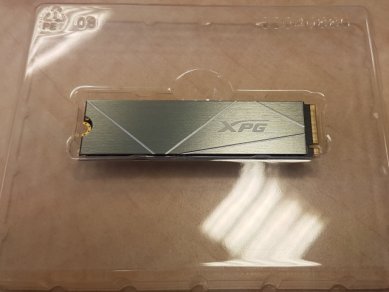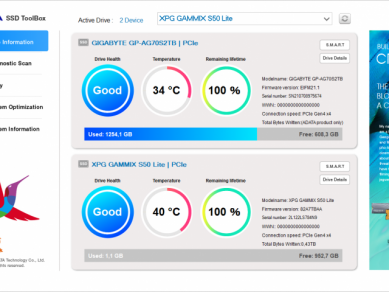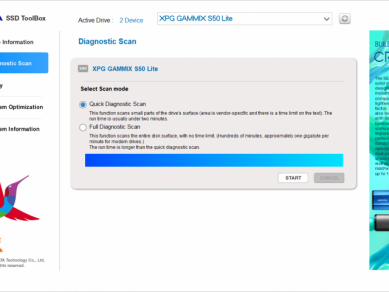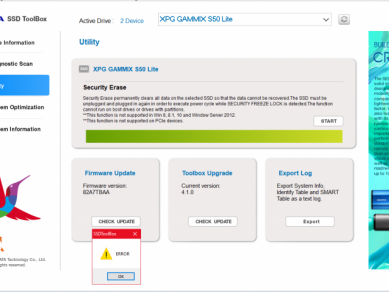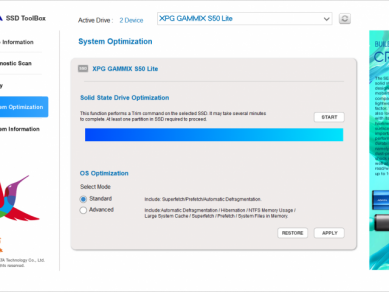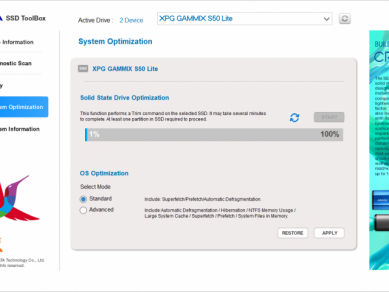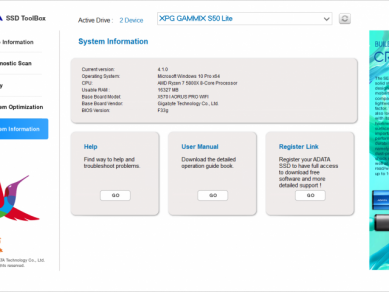It’s been some Friday that I tested the SSD and now I’m going back to it (it’s a bit new for the second time, however, I measured this SSD sometime in late July). I have recently decided to change the testing methodology, mainly in favor of writing tests of large amounts of data. Modern PCIe NVMe disks do not have problems reading sequentially or randomly at high speed, writing is typically problematic. My goal is to exhaust various DRAM caches, SLC caches and so on. There will also be graphics from some common benchmarks and also some quick testers in Linux.
The SSD itself has a minimalist package, in which we can find more or less everything we need, ie the SSD itself, the manual and other software can be easily downloaded from the Internet.
ADATA sells the tested SSD for 3490 CZK with VAT, which puts the disk in direct competition with Intel 670p 1TB QLC SSD or Samsung 980 1TB M.2 SSD (not to be confused with 980 Pro), which is TLC without DRAM cache. On paper, it is faster than the two mentioned disks, offers 740 TB of transcripts under a five-year warranty and also integrates something like a cooler in the form of a thin aluminum sheet, but in laptops that have nothing, this is a relatively interesting solution.

ADATA XPG GAMMIX S50 Lite 1TB is more or less cheap TLC SSD with PCIe 4.0 controller, specifically it uses eight-channel Silicon Motion SM2267 (supports NVMe 1.4 standard), 512MB DDR4 DRAM cache is connected to the controller, 2TB version of SSD has twice available (Samsung for these capacities it typically offers twice the DRAM cache). The controller is connected to the system via four PCIe Gen4 lines, while also supporting third-generation PCIe. It is somewhat strange that a PCIe Gen4 controller has been used, as the maximum sequential read speed is up to 3800 MB / s, which is not a problem to push through four PCIe Gen3 lines. It can be interesting to use on systems where it is possible to use only two PCIe Gen4 lines, connectivity will remain sufficient, but this situation will probably be very rare.

The SSD allegedly uses NAND chips from Micron and these are 96-layer 3D TLC chips, but I don’t know exactly which ones. There is also an SLC cache, but I do not know its size, because it is dynamic. I originally wanted to remove the metal “heatsink”, but I didn’t want to damage the SSD, the glue holds really tight and so there are no photos of the chips and I’m not 100% sure which DRAM cache is used.
In terms of performance, ADATA claims that the SSD can read up to 3800 MB / s sequentially and write up to 3200 MB / s sequentially in terms of transcripts, reporting 740 TBW for the 1TB version (512GB has 370 TBW resistance, 2TB version 1480 TBW), which I consider sufficient given the capacity and price. In addition, the warranty is five years, provided that we do not write over 740 TB of data. The competitive Samsung 980 1TB without DRAM cache offers only 600 TB of transcripts.
ADATA offers the ADATA SSD ToolBox program for its SSDs, in which we can perform actions such as firmware upgrades, find out the health of the SSD, Secure Erase and so on. In my case, the “Check Update” option of the firmware did not work, only the ERROR warning window popped up.
Test set
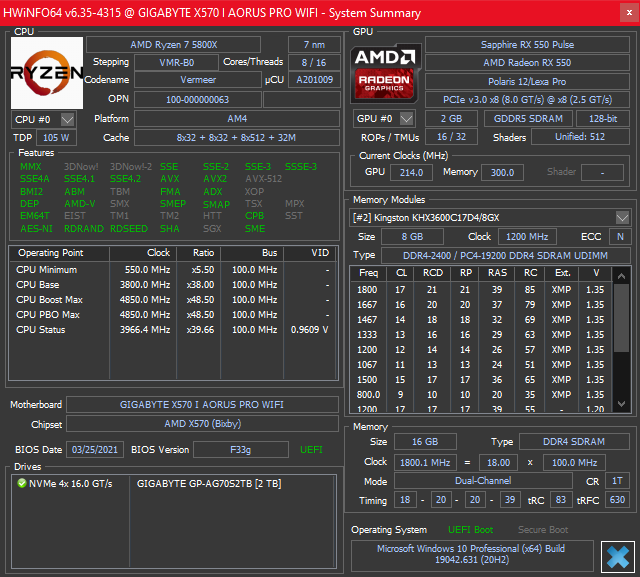
I will present the test set in speed, I tested on the GIGABYTE X570 I AORUS PRO WIFI motherboard. The Gigabyte AORUS 7000s Gen4 2TB SSD was only partially tested because I don’t have two identical pieces, so I performed write tests against the older Gigabyte AORUS NVMe Gen4 SSD 500GB (for the 205 and 447 GB data write test). The SSD served as the source read disk for other SSDs and will continue to do so.

For the best performance of the tested SSD, I always connect to the main M.2 slot, which is connected to the processor by four fourth-generation PCIe lines. This upper slot has an AMD X570 chipset cooler above it, there is a small fan, which normally only spins around 2000 RPM. To improve the performance of all tested SSDs, I changed its behavior to “Standard”, so that the fan is constantly rotating at some 3500-4400 RPM and blowing the PCIe NVMe disk controller.
The Gigabyte AORUS 7000s 2TB serves as a system drive in the second lower slot of the motherboard, which is connected by four PCIe Gen4 lines to the AMD X570 chipset. During testing, I do not have any devices connected (except the keyboard and mouse) that would take over the connectivity between the chipset and the CPU. I test without network, WiFi and other USB devices. The Sapphire Pulse Radeon RX 550 2GB serves as the graphics card, as I don’t need an extremely fast GPU, and it’s also because the AMD Ryzen 7 5800X processor doesn’t have an integrated graphics core, which could negatively affect performance in some tests. The processor cools the Noctua NH-U12S SE-AM4 heatsink with the Noctua NF-F12 iPPC-2000 fan. The set is powered by the Corsair HX1200 power supply and the primary operating system is Windows 10 Pro v20H2.
–

